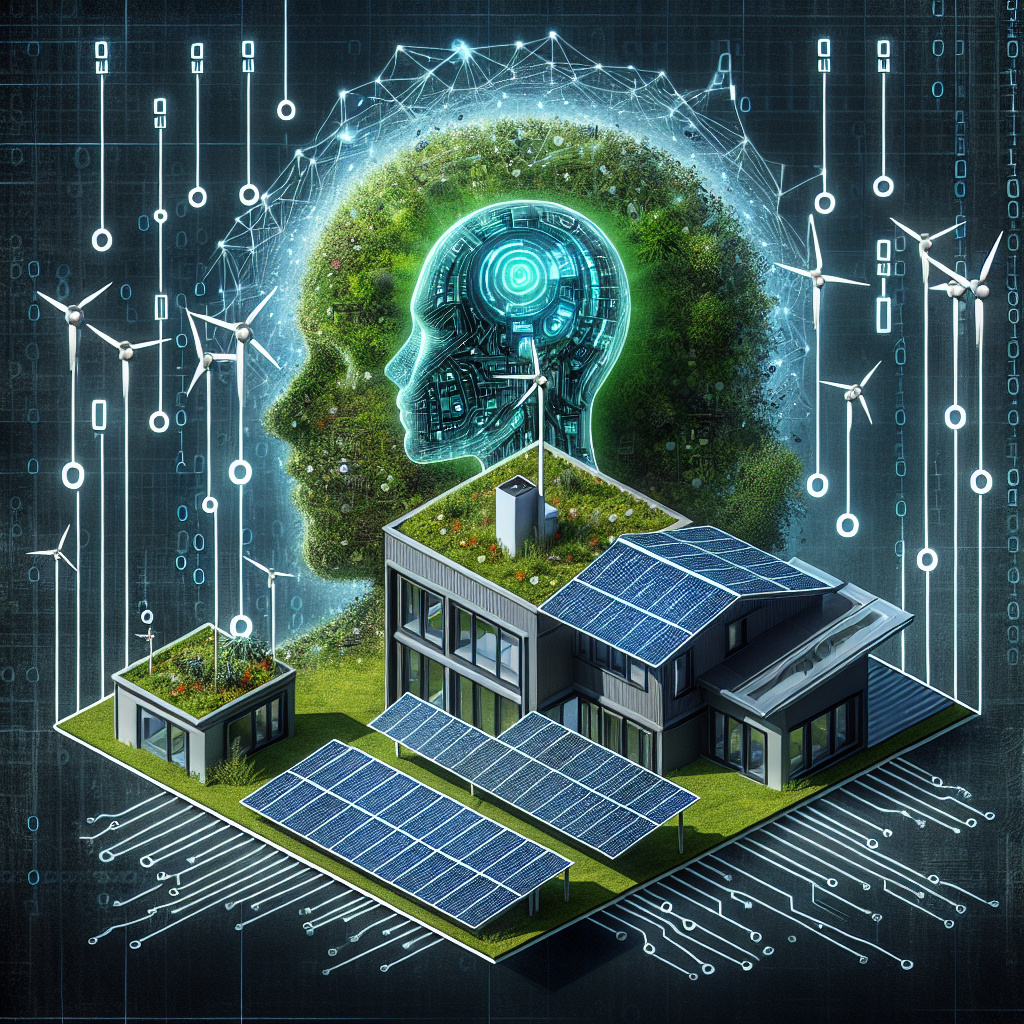The Impact of AI on Sustainable Building Design
In recent years, the construction industry has seen a significant shift towards more sustainable building practices. With growing concerns about climate change and the environmental impact of traditional construction methods, architects and engineers are increasingly turning to innovative technologies to design and construct buildings that are more energy-efficient, environmentally friendly, and sustainable. One such technology that is revolutionizing the way buildings are designed and constructed is artificial intelligence (AI).
AI is a branch of computer science that focuses on the development of intelligent machines that can perform tasks that typically require human intelligence, such as visual perception, speech recognition, decision-making, and language translation. In the context of sustainable building design, AI is being used to analyze data, optimize building performance, and improve efficiency in ways that were previously impossible.
One of the key ways that AI is impacting sustainable building design is through the use of advanced modeling and simulation tools. These tools allow architects and engineers to create virtual models of buildings and simulate how they will perform in different environments and under different conditions. By using AI algorithms to analyze these simulations, designers can optimize building performance, reduce energy consumption, and minimize environmental impact.
For example, AI can be used to analyze the thermal performance of a building and optimize its design to maximize natural light and ventilation, reduce heat loss, and minimize the need for artificial heating and cooling. By using AI algorithms to analyze a wide range of variables, such as building orientation, window placement, insulation materials, and shading devices, designers can create buildings that are more energy-efficient and comfortable for occupants.
AI can also be used to optimize the selection of materials and construction methods to reduce waste, lower carbon emissions, and improve the overall sustainability of a building. By analyzing data on the environmental impact of different materials and construction techniques, AI algorithms can help designers make informed decisions that minimize environmental harm and maximize the use of sustainable materials.
In addition to modeling and simulation tools, AI is also being used to automate and optimize the construction process itself. By using AI algorithms to analyze data on construction schedules, material availability, and labor costs, builders can optimize the construction process to reduce waste, lower costs, and improve efficiency. AI-powered robots and drones can also be used to perform tasks that are dangerous or difficult for humans, such as site surveying, materials handling, and quality control.
Overall, the impact of AI on sustainable building design is significant and far-reaching. By using AI to analyze data, optimize building performance, and automate construction processes, architects and engineers can create buildings that are more energy-efficient, environmentally friendly, and sustainable. As the technology continues to advance, we can expect to see even greater innovations in sustainable building design that will help address the urgent challenges of climate change and environmental degradation.
FAQs
Q: How is AI used in sustainable building design?
A: AI is used in sustainable building design to analyze data, optimize building performance, and automate construction processes. By using AI algorithms to analyze simulations, optimize material selection, and automate construction tasks, architects and engineers can create buildings that are more energy-efficient, environmentally friendly, and sustainable.
Q: What are the benefits of using AI in sustainable building design?
A: The benefits of using AI in sustainable building design include improved energy efficiency, reduced environmental impact, lower construction costs, and improved building performance. By using AI to analyze data, optimize designs, and automate construction processes, architects and engineers can create buildings that are more sustainable and resilient.
Q: What are some examples of AI applications in sustainable building design?
A: Some examples of AI applications in sustainable building design include modeling and simulation tools, optimization algorithms, and automation technologies. These tools can be used to analyze building performance, optimize material selection, and automate construction processes to create buildings that are more energy-efficient, environmentally friendly, and sustainable.
Q: How can AI help address the challenges of climate change and environmental degradation?
A: By using AI in sustainable building design, architects and engineers can create buildings that are more energy-efficient, environmentally friendly, and sustainable. These buildings can help reduce carbon emissions, lower energy consumption, and minimize environmental impact, helping to address the urgent challenges of climate change and environmental degradation.

